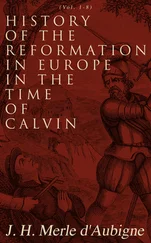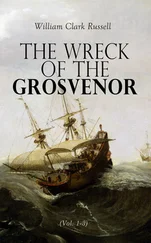William Clark - History of the Expedition under the Command of Captains Lewis and Clark, Vol. I.
Здесь есть возможность читать онлайн «William Clark - History of the Expedition under the Command of Captains Lewis and Clark, Vol. I.» — ознакомительный отрывок электронной книги совершенно бесплатно, а после прочтения отрывка купить полную версию. В некоторых случаях можно слушать аудио, скачать через торрент в формате fb2 и присутствует краткое содержание. Жанр: Путешествия и география, История, foreign_edu, foreign_antique, foreign_prose, на английском языке. Описание произведения, (предисловие) а так же отзывы посетителей доступны на портале библиотеки ЛибКат.
- Название:History of the Expedition under the Command of Captains Lewis and Clark, Vol. I.
- Автор:
- Жанр:
- Год:неизвестен
- ISBN:нет данных
- Рейтинг книги:5 / 5. Голосов: 1
-
Избранное:Добавить в избранное
- Отзывы:
-
Ваша оценка:
- 100
- 1
- 2
- 3
- 4
- 5
History of the Expedition under the Command of Captains Lewis and Clark, Vol. I.: краткое содержание, описание и аннотация
Предлагаем к чтению аннотацию, описание, краткое содержание или предисловие (зависит от того, что написал сам автор книги «History of the Expedition under the Command of Captains Lewis and Clark, Vol. I.»). Если вы не нашли необходимую информацию о книге — напишите в комментариях, мы постараемся отыскать её.
History of the Expedition under the Command of Captains Lewis and Clark, Vol. I. — читать онлайн ознакомительный отрывок
Ниже представлен текст книги, разбитый по страницам. Система сохранения места последней прочитанной страницы, позволяет с удобством читать онлайн бесплатно книгу «History of the Expedition under the Command of Captains Lewis and Clark, Vol. I.», без необходимости каждый раз заново искать на чём Вы остановились. Поставьте закладку, и сможете в любой момент перейти на страницу, на которой закончили чтение.
Интервал:
Закладка:
These are the first remains of the kind which we have had an opportunity of examining; but our French interpreters assure us, that there are great numbers of them on the Platte, the Kanzas, the Jacques, &c. and some of our party say, that they observed two of those fortresses on the upper side of the Petit Arc creek, not far from its mouth; that the wall was about six feet high, and the sides of the angles one hundred yards in length.
September 3. The morning was cold, and the wind from the northwest. We passed at sunrise, three large sandbars, and at the distance of ten miles reached a small creek, about twelve yards wide, coming in from the north, above a white bluff: this creek has obtained the name of Plum creek, from the number of that fruit which are in the neighbourhood, and of a delightful quality. Five miles further, we encamped on the south near the edge of a plain; the river is wide, and covered with sandbars to-day: the banks are high and of a whitish colour; the timber scarce, but an abundance of grapes. Beaver houses too have been observed in great numbers on the river, but none of the animals themselves.
September 4. We set out early, with a very cold wind from S.S.E. and at one mile and a half, reached a small creek, called Whitelime creek, on the south side. Just above this is a cliff, covered with cedar trees, and at three miles a creek, called Whitepaint creek, of about thirty yards wide: on the same side, and at four and a half miles distance from the Whitepaint creek, is the Rapid river, or, as it is called by the French, la Riverequi Court; this river empties into the Missouri, in a course S.W. by W. and is one hundred and fifty-two yards wide, and four feet deep at the confluence. It rises in the Black mountains, and passes through a hilly country, with a poor soil. Captain Clark ascended three miles to a beautiful plain, on the upper side, where the Pawnees once had a village: he found that the river widened above its mouth, and much divided by sands and islands, which, joined to the great rapidity of the current, makes the navigation very difficult, even for small boats. Like the Platte its waters are of a light colour; like that river too it throws out into the Missouri, great quantities of sand, coarser even than that of the Platte, which form sandbars and shoals near its mouth.
We encamped just above it, on the south, having made only eight miles, as the wind shifted to the south, and blew so hard that in the course of the day we broke our mast: we saw some deer, a number of geese, and shot a turkey and a duck: the place in which we halted is a fine low-ground, with much timber, such as red cedar, honeylocust, oak, arrowwood, elm and coffeenut.
September 5, Wednesday. The wind was again high from the south. At five miles, we came to a large island, called Pawnee island, in the middle of the river; and stopped to breakfast at a small creek on the north, which has the name of Goat creek, at eight and a half miles. Near the mouth of this creek the beaver had made a dam across so as to form a large pond, in which they built their houses. Above this island the river Poncara falls into the Missouri from the south, and is thirty yards wide at the entrance. Two men whom we despatched to the village of the same name, returned with information that they had found it on the lower side of the creek; but as this is the hunting season, the town was so completely deserted that they had killed a buffaloe in the village itself. This tribe of Poncaras, who are said to have once numbered four hundred men, are now reduced to about fifty, and have associated for mutual protection with the Mahas, who are about two hundred in number. These two nations are allied by a similarity of misfortune; they were once both numerous, both resided in villages, and cultivated Indian corn; their common enemies, the Sioux and small-pox, drove them from their towns, which they visit only occasionally for the purposes of trade; and they now wander over the plains on the sources of the Wolf and Quieurre rivers. Between the Pawnee island and Goat creek on the north, is a cliff of blue earth, under which are several mineral springs, impregnated with salts: near this we observed a number of goats, from which the creek derives its name. At three and a half miles from the creek, we came to a large island on the south, along which we passed to the head of it, and encamped about four o'clock. Here we replaced the mast we had lost, with a new one of cedar: some bucks and an elk were procured to-day, and a black tailed deer was seen near the Poncara's village.
Thursday, September 6. There was a storm this morning from the N.W. and though it moderated, the wind was still high, and the weather very cold; the number of sandbars too, added to the rapidity of the current, obliged us to have recourse to the towline: with all our exertions we did not make more than eight and a half miles, and encamped on the north, after passing high cliffs of soft, blue, and red coloured stone, on the southern shore. We saw some goats, and great numbers of buffaloe, in addition to which the hunters furnished us with elk, deer, turkies, geese, and one beaver: a large catfish too was caught in the evening. The ground near the camp, was a low prarie, without timber, though just below is a grove of cottonwood.
Friday, September 7. The morning was very cold and the wind southeast. At five and a half miles, we reached and encamped at the foot of a round mountain, on the south, having passed two small islands. This mountain, which is about three hundred feet at the base, forms a cone at the top, resembling a dome at a distance, and seventy feet or more above the surrounding highlands. As we descended from this dome, we arrived at a spot, on the gradual descent of the hill, nearly four acres in extent, and covered with small holes: these are the residence of a little animal, called by the French, petit chien (little dog) who sit erect near the mouth, and make a whistling noise, but when alarmed take refuge in their holes. In order to bring them out, we poured into one of the holes five barrels of water without filling it, but we dislodged and caught the owner. After digging down another of the holes for six feet, we found, on running a pole into it, that we had not yet dug half way to the bottom: we discovered, however, two frogs in the hole, and near it we killed a dark rattlesnake, which had swallowed a small prairie dog: we were also informed, though we never witnessed the fact, that a sort of lizard, and a snake, live habitually with these animals. The petit chien are justly named, as they resemble a small dog in some particulars, though they have also some points of similarity to the squirrel. The head resembles the squirrel in every respect, except that the ear is shorter, the tail like that of the ground-squirrel, the toe-nails are long, the fur is fine, and the long hair is gray.
Saturday, September 8. The wind still continued from the southeast, but moderately. At seven miles we reached a house on the north side, called the Pawnee house, where a trader, named Trudeau, wintered in the year 1796-7: behind this, hills, much higher than usual, appear to the north, about eight miles off. Before reaching this house, we came by three small islands, on the north side, and a small creek on the south; and after leaving it, reached another, at the end of seventeen miles, on which we encamped, and called it Boat island: we here saw herds of buffaloe, and some elk, deer, turkies, beaver, a squirrel, and a prairie dog. The party on the north represent the country through which they passed, as poor, rugged, and hilly, with the appearance of having been lately burnt by the Indians; the broken hills, indeed, approach the river on both sides, though each is bordered by a strip of woodland near the water.
Sunday, September 9. We coasted along the island on which we had encamped, and then passed three sand and willow islands, and a number of smaller sandbars. The river is shallow, and joined by two small creeks from the north, and one from the south. In the plains, to the south, are great numbers of buffaloe, in herds of nearly five hundred; all the copses of timber appear to contain elk or deer. We encamped on a sandbar, on the southern shore, at the distance of fourteen and a quarter miles.
Читать дальшеИнтервал:
Закладка:
Похожие книги на «History of the Expedition under the Command of Captains Lewis and Clark, Vol. I.»
Представляем Вашему вниманию похожие книги на «History of the Expedition under the Command of Captains Lewis and Clark, Vol. I.» списком для выбора. Мы отобрали схожую по названию и смыслу литературу в надежде предоставить читателям больше вариантов отыскать новые, интересные, ещё непрочитанные произведения.
Обсуждение, отзывы о книге «History of the Expedition under the Command of Captains Lewis and Clark, Vol. I.» и просто собственные мнения читателей. Оставьте ваши комментарии, напишите, что Вы думаете о произведении, его смысле или главных героях. Укажите что конкретно понравилось, а что нет, и почему Вы так считаете.












